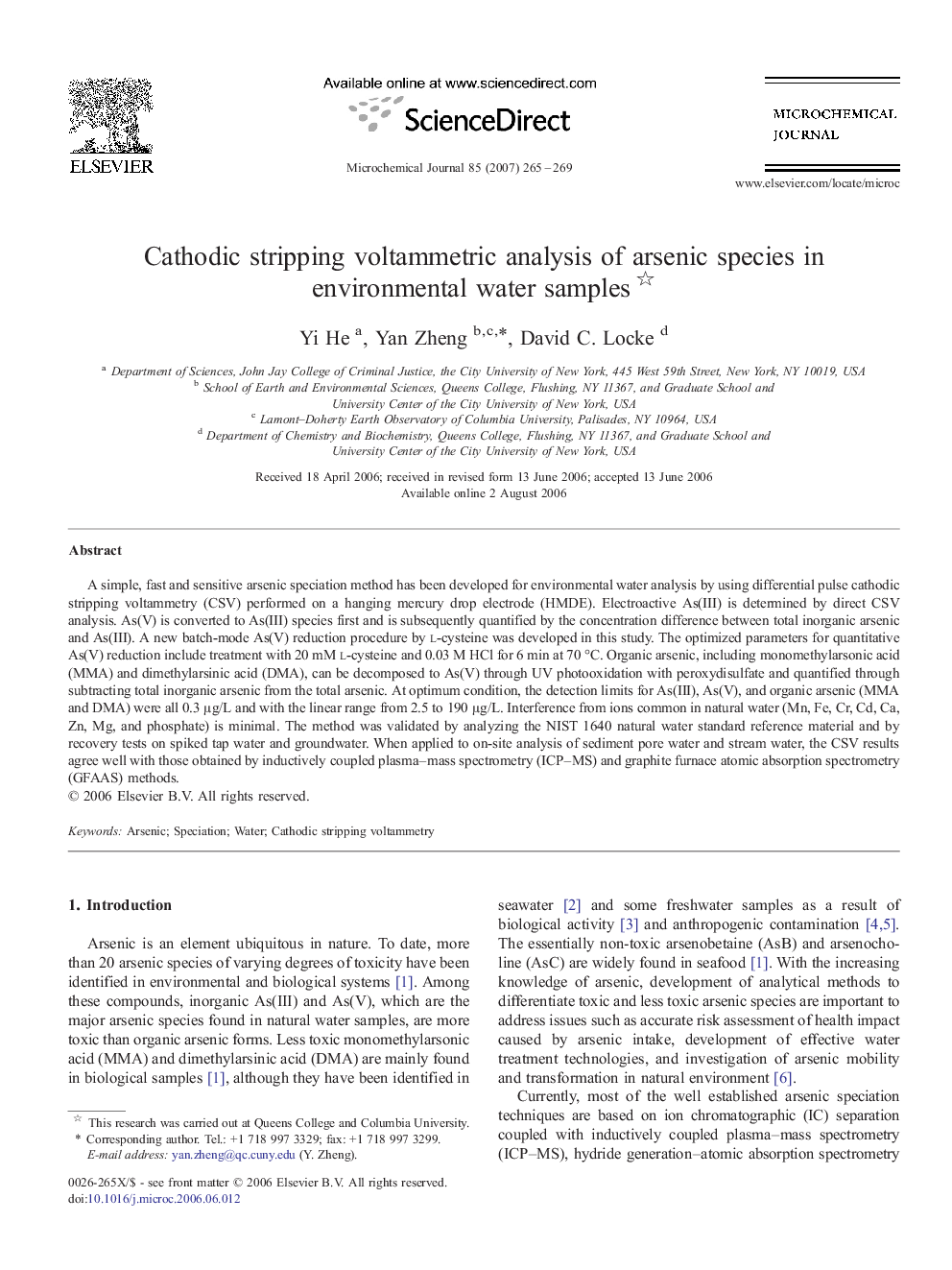| Article ID | Journal | Published Year | Pages | File Type |
|---|---|---|---|---|
| 1228457 | Microchemical Journal | 2007 | 5 Pages |
A simple, fast and sensitive arsenic speciation method has been developed for environmental water analysis by using differential pulse cathodic stripping voltammetry (CSV) performed on a hanging mercury drop electrode (HMDE). Electroactive As(III) is determined by direct CSV analysis. As(V) is converted to As(III) species first and is subsequently quantified by the concentration difference between total inorganic arsenic and As(III). A new batch-mode As(V) reduction procedure by l-cysteine was developed in this study. The optimized parameters for quantitative As(V) reduction include treatment with 20 mM l-cysteine and 0.03 M HCl for 6 min at 70 °C. Organic arsenic, including monomethylarsonic acid (MMA) and dimethylarsinic acid (DMA), can be decomposed to As(V) through UV photooxidation with peroxydisulfate and quantified through subtracting total inorganic arsenic from the total arsenic. At optimum condition, the detection limits for As(III), As(V), and organic arsenic (MMA and DMA) were all 0.3 μg/L and with the linear range from 2.5 to 190 μg/L. Interference from ions common in natural water (Mn, Fe, Cr, Cd, Ca, Zn, Mg, and phosphate) is minimal. The method was validated by analyzing the NIST 1640 natural water standard reference material and by recovery tests on spiked tap water and groundwater. When applied to on-site analysis of sediment pore water and stream water, the CSV results agree well with those obtained by inductively coupled plasma–mass spectrometry (ICP–MS) and graphite furnace atomic absorption spectrometry (GFAAS) methods.
